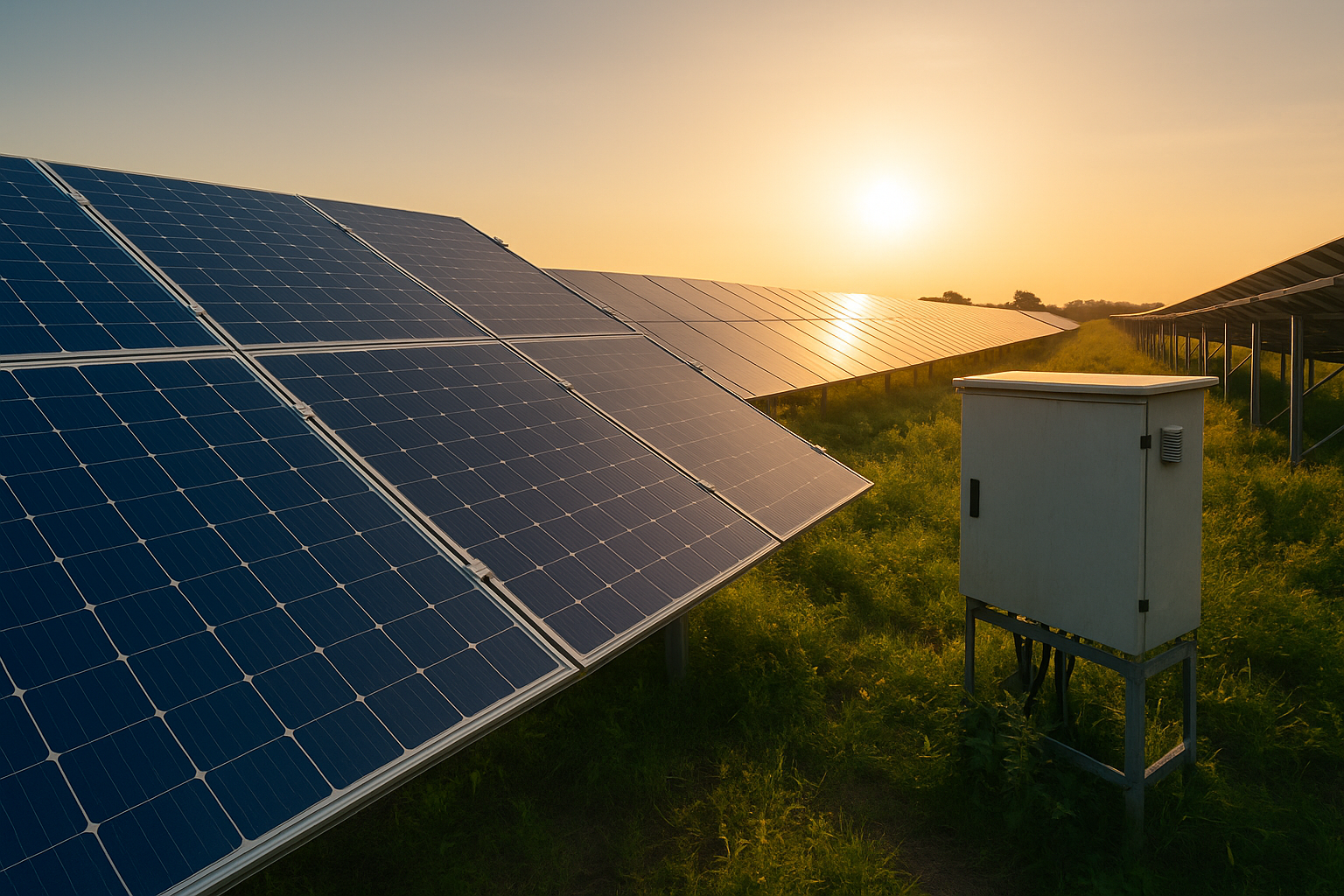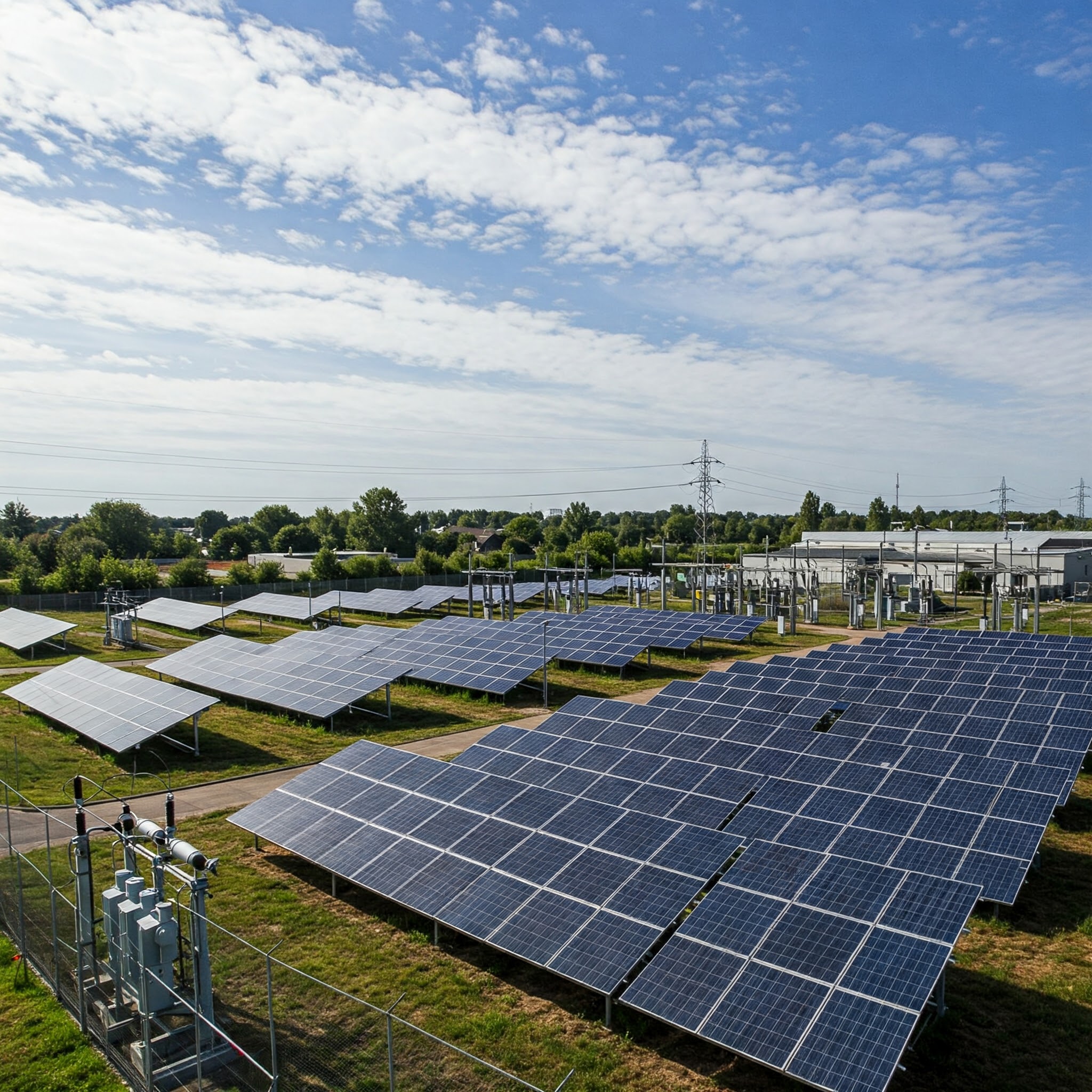7 Insights for Solar Energy in 2025

In recent years, solar energy has established its position as one of the main pillars of the global energy transition. The greater the global demand for electricity, the greater the share of solar energy in the energy matrix.
According to SolarPower Europe, solar energy will experience even stronger global growth in the next 5 years, with 20% more plants per year.
With each advance, new challenges arise, requiring constant innovation and efficiency to maximize results. Dirt, tracker failures, shading and curtailment are already known obstacles that directly impact the productivity of solar plants. However, looking ahead to 2025, what can we expect? What challenges will arise and what trends will shape the sector?
Based on the lessons learned in 2024, we explore some bets that promise to transform solar energy, solving persistent problems and preparing the sector for a more efficient future:
- Global growth of installed capacity
- Use of AI and predictive data to minimize energy losses
- Advanced automation solutions for cleaning and maintenance
- Integration with energy storage
- Shading and intelligent energy management
- Expansion of distributed generation plants
- Curtailment: the challenge of excess energy produced
Follow our bets for this year and discover how to maximize the performance of your assets:
Global Growth of Installed Capacity
The renewable energy sector is poised for accelerated growth, with the addition of more than 5,500 GW of new capacity between 2024 and 2030, according to the International Energy Agency (IEA)'s Renewables 2024 report. Solar photovoltaic energy leads this expansion and is expected to account for around 80% of global renewable energy growth during this period. This growth will be driven by:
- Cost reduction: The costs of photovoltaic modules continue to fall due to economies of scale and technological innovations.
- Government support: Policies such as subsidies and feed-in tariffs remain essential to stimulate investments.
Intensive Use of AI and Predictive Data to Minimize Energy Losses
Accumulated dirt, shadows and technical failures silently affect the efficiency of solar panels. With the evolution of Artificial Intelligence (AI)-based solutions, these losses are minimized through precise predictive analytics and automation.
How does AI solve this problem?
- Predictive maintenance: anticipate failures before they occur, ensuring less downtime and greater productivity.
- Real-time monitoring: continuous analysis of panel performance, identifying drops in efficiency caused by dirt or shadows.
- Actionable insights: data transformed into quick actions, optimizing energy production.
The adoption of generative AI tools has grown rapidly, with one-third of organizations using these technologies regularly in at least one business function. Furthermore, a study by McKinsey & Company (2023) points out that 40% of companies plan to increase their investments in AI due to advances in generative AI. These tools offer significant opportunities to optimize operations and improve energy efficiency, especially in the solar energy sector. By implementing generative AI solutions, companies can enhance predictive maintenance, real-time monitoring and gain actionable insights, resulting in more efficient and sustainable energy production.
Advanced Automation Solutions for Cleaning and Maintenance
Solar panels accumulate dirt due to dust, pollution and organic waste. Soiling can reduce the efficiency of modules by up to 25% if there is no proper and frequent cleaning. Traditional solutions, such as manual cleaning, are expensive, time-consuming and often inefficient on a large scale.
Automation has become increasingly present in various sectors, and the solar energy sector is no exception. The search for greater efficiency, cost reduction and sustainability drives the adoption of technologies such as autonomous robots, drones and smart software.
Automation trends for solar plants:
- Autonomous cleaning robots: Regular cleaning of solar panels is crucial to ensure maximum energy generation efficiency. These robots offer an efficient solution for this task, performing cleaning in a programmed manner and with low water consumption.
- Inspection drones: Equipped with high-resolution cameras and sensors, such as thermal cameras, drones allow for quick and efficient inspection of large areas in solar plants. This technology helps in detecting failures, shading and other problems that can affect energy generation.
- Automated alarm and maintenance systems: Smart software, integrated with sensors and monitoring systems, allows for real-time data collection and analysis. Based on this information, the system can generate alerts and schedule preventive maintenance, optimizing time and resources.
Expected results with automation:
- Reduction of operational costs: Automating tasks such as cleaning and inspection reduces the need for labor and optimizes the use of resources, such as water and energy.
- Increased efficiency: Frequent cleaning and inspection, carried out automatically, ensure the proper functioning of solar panels and maximize energy generation.
- Sustainability: Automation contributes to the sustainability of solar plants, reducing water and energy consumption and minimizing the environmental impact of operations.
Integration with Energy Storage
With the increasing penetration of solar energy in the energy matrix, energy storage becomes an essential element. Lithium-ion battery systems and advances in redox flow technologies are considered fundamental to balance the intermittency of solar generation.
According to Solar Power World, the global energy storage market is expected to grow from 20 GW in 2023 to 58 GW in 2025. This expansion will enable greater stability and integration of renewable sources into the electricity grid.
Shading and Intelligent Energy Management: Challenges and Solutions to Maximize Solar Efficiency
Shading is a critical, yet often underestimated, challenge in the solar sector. Small shadows – caused by structures, vegetation or even accumulated dirt – can significantly compromise energy production by reducing the efficiency of photovoltaic panels. To mitigate this problem, some strategic solutions include:
- Real-time identification: artificial intelligence algorithms detect the incidence of shadows and suggest corrective actions;
- Optimization of trackers: automatic adjustments in the inclination of the panels minimize efficiency losses;
- Smart reports: predictive analysis indicates where to remove vegetation, modify the arrangement of panels or perform preventive maintenance.
In addition, with the advancement of smart grids, energy flow management is becoming increasingly efficient. This allows not only to balance supply and demand dynamically, but also to implement advanced strategies, such as:
- Prioritization of energy sources: automated selection of which sources to reduce or increase according to the needs of the grid;
- Intelligent redistribution: directing excess production to storage or to strategic consumers;
- Grid stabilization: active control to avoid losses and optimize energy efficiency in real time.
These innovations not only maximize the use of solar energy, but also increase the reliability and sustainability of the electrical system.
Expansion of Distributed Generation Plants
Distributed Generation (DG) is gaining ground in countries with high population density and decentralized electricity grids. A study conducted by Absolar showed that since 2012, investments in DG plants totaled about R$ 142.5 billion, generating more than 870 thousand jobs and a collection of R$ 42.3 billion to public coffers.
The main drivers include:
- Reduction of electricity costs.
- Possibility of energy exchange between consumers (peer-to-peer).
- Increase in energy autonomy.
Curtailment: The Challenge of Excess Energy Produced
Curtailment (or constrained off) occurs when solar energy production exceeds the capacity of the electricity grid to absorb it, resulting in the forced reduction of production.
Possible Solutions:
- Energy storage: integration with batteries to store the generated surplus;
- Smart grid systems: efficient redistribution of energy in real time;
- Generation forecasting: use of AI to align production with demand.
The expected impact includes less waste of clean energy, maximization of the operational efficiency of plants and better integration of renewable sources in the grid.
The trends for 2025 show that the future of solar energy will be smarter, automated and connected. The combination of Artificial Intelligence and advanced and predictive automation will solve persistent problems and ensure a more efficient and sustainable sector.
The Delfos platform provides AI-based technology to enable intelligent and predictable renewable energy production in your assets. With more than 14 GW monitored and more than 100 predictive models, we maximize the energy efficiency of your plants and minimize losses.
Want to know how AI and smart solutions can transform your solar plant? Click here, book your demo, talk to our experts and take your operation to the next level!
Book a meeting
Let's connect and forge new partnerships
Custom Renewable Energy Solutions
Contact us today to discuss your renewable energy needs and find the perfect solution for your business.


